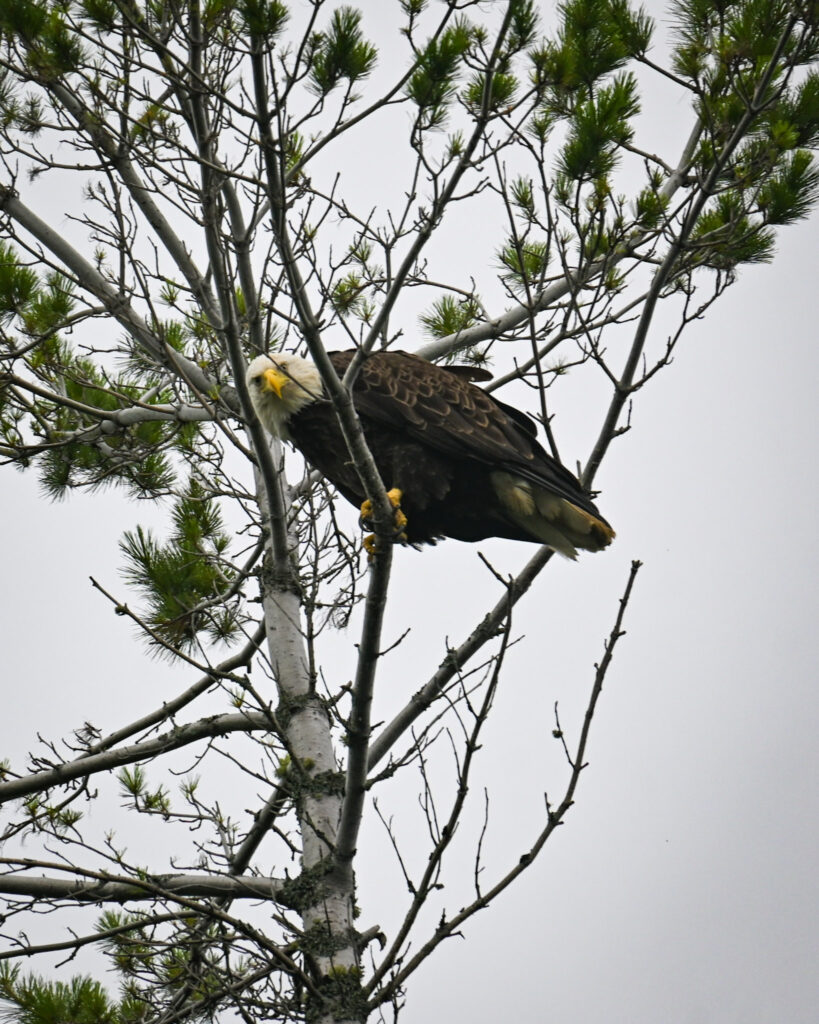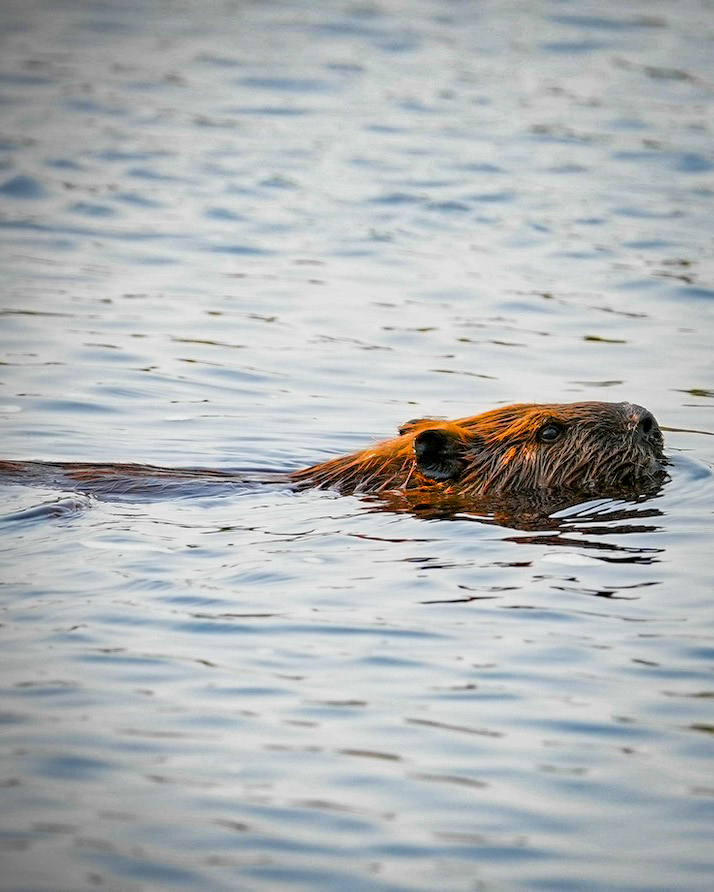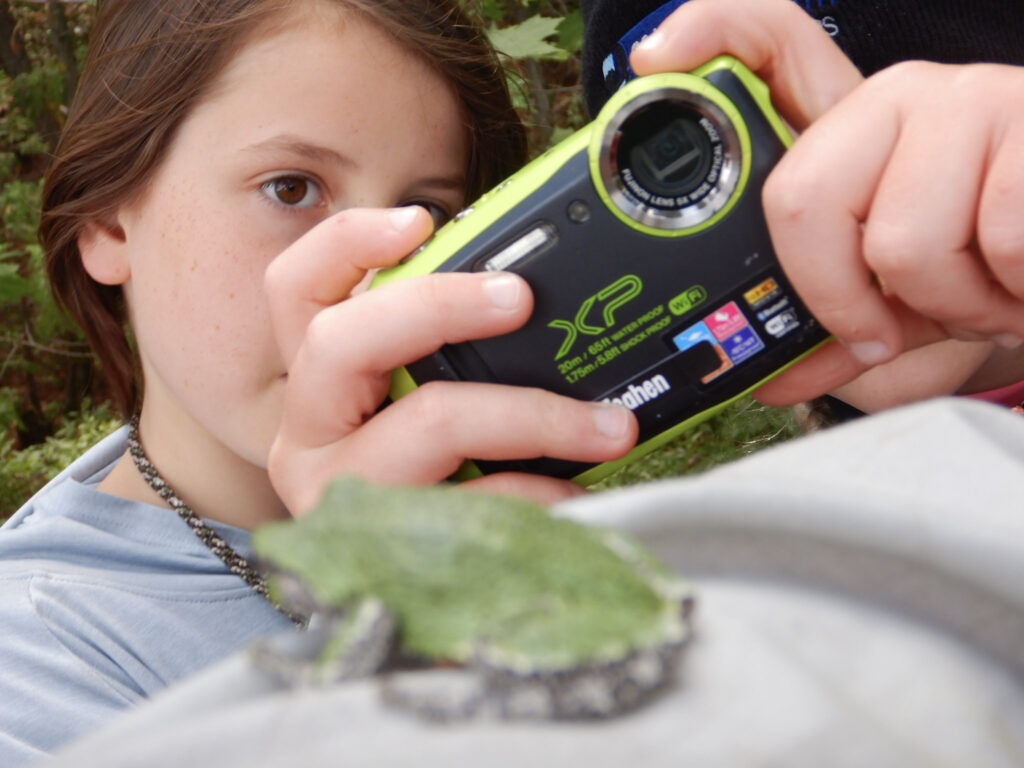Spring Wildlife Watch
What to Look for in the Temagami Wilderness
As winter loosens its grip and the days grow longer, the northern wilderness comes alive in ways that feel almost magical. For those who dream of canoe season all year long, spring is the perfect time to tune in to the natural world, no matter where you live. While you may not be in Temagami just yet, keeping an eye out for seasonal wildlife in your own backyard can help bring the spirit of the North closer to home.
Birds on the Move
Who’s Back in the Sky?
Spring is migration season, which means birds are on the move—sometimes traveling thousands of kilometers to return to their nesting grounds. One of the most iconic birds of the canoe country, the common loon, begins arriving as soon as the ice breaks on the lakes. Loons are built for the water, with legs set far back on their bodies, making them excellent divers but clumsy on land. They can hold their breath for over a minute while hunting fish beneath the surface.
Other migratory birds to watch for include the red-winged blackbird, whose sharp “konk-a-ree!” call is a classic sound of wetlands, and Canada geese, who travel in their famous V-shaped formations to conserve energy. Raptors like ospreys and bald eagles return as well, using their keen eyesight to scan for fish from high above. Did you know an eagle’s vision is up to eight times sharper than a human’s? They can spot prey from more than 3 kilometers away!


Awakening Wildlife: Mammals on the Move
Who’s Emerging from the Den?
As temperatures rise, hibernators begin to stir. Black bears emerge from their dens, having lost up to 30% of their body weight over the winter. Unlike true hibernators, bears enter a state called torpor, meaning they can wake up and move around if necessary.
In the wetlands, beavers get back to work repairing their lodges and dams, which may have been damaged by ice. Beavers don’t hibernate; instead, they store branches underwater and swim beneath the ice all winter. Their large, ever-growing front teeth are orange due to iron in the enamel, making them extra strong for gnawing through wood.
Further into the forest, moose shed their thick winter coats and start browsing on fresh spring growth. Moose are excellent swimmers and can dive up to 5 meters (16 feet) underwater to feed on aquatic plants. If you’re lucky, you might spot a mother moose with her wobbly-legged calf, born in late spring.
Tiny but Mighty: Spring’s Tiny Creatures
Keep an Eye Out for Nature’s Smallest Wonders
Spring is also the season of renewal, with baby animals appearing across the landscape. Fox kits, wolf pups, and porcupine babies (called porcupettes!) stay close to their mothers as they begin to explore the world. Unlike many animals, porcupines are born with soft quills that harden within hours—nature’s way of ensuring they’re ready to defend themselves almost immediately.
In the ponds and marshes, frogs and salamanders return from their winter hideouts. The sound of spring peepers—tiny frogs no bigger than a paperclip—fills the air at dusk. These little amphibians survive cold winters by producing their own natural antifreeze, allowing them to freeze solid and thaw out again in spring.
Meanwhile, the first painted turtles climb onto sun-warmed logs to bask after months buried in the mud. Amazingly, painted turtles can survive months without oxygen by slowing their metabolism and drawing energy from stored sugars.


How to Watch for Wildlife Near You
Tune In to the Signs of Spring
Even if you’re far from the lakes and forests of the North, spring wildlife is all around—you just have to know where to look! Visit a local park, pond, or wooded trail and take a moment to observe your surroundings. Look for signs of animal activity: tracks in the mud, nibbled leaves, birds flitting between branches, or a turtle basking on a sun-warmed log.
Try slowing down and tuning into different senses. Can you hear the rhythmic drumming of a woodpecker? The rustle of squirrels chasing each other through the trees? The distant honking of geese flying overhead? Spring is full of subtle but exciting changes, and the more you notice, the more connected you’ll feel to the season.
For a fun challenge, start a wildlife journal. Jot down your sightings, sketch an interesting plant or animal, or record the first time you hear spring peepers calling at dusk. Over time, you’ll start recognizing patterns—when certain birds return, when the first buds appear on the trees, or when insects begin to reappear. These small observations help you appreciate the rhythms of nature, no matter where you are.
Share Your Spring Sightings
Celebrate the Season with Us!
As the wilderness wakes up, every wildlife sighting is a reminder that adventure is just around the corner. Whether you’re spotting birds in your backyard, tracking animal prints in the mud, or dreaming about paddling through Temagami, take a moment to appreciate the magic of spring.
💬 What signs of spring have you noticed? Share your best nature moments—tag a friend, mentor, or fellow paddler who loves the great outdoors as much as you do.
📸 Show us your wildlife adventures! Tag @CampTemagami in your photos—we’d love to see what spring looks like in your neck of the woods.
🛶 Pass it on. Encourage someone new to explore nature this season and experience the wonder, discovery, and deep connection that make the wilderness so special.

Written by Tiffany vanLieshout, with formatting and editorial assistance provided by AI.

